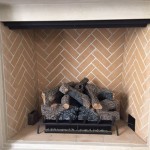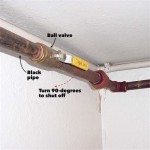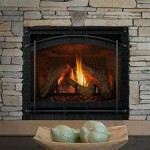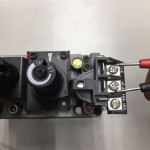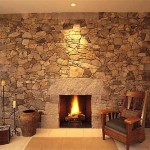Gas Fireplace Remote Control Thermostats: Enhancing Comfort and Efficiency
Gas fireplace remote control thermostats offer a significant upgrade to the traditional gas fireplace, providing users with enhanced control over their home heating and a more convenient and efficient way to manage their fireplace operation. These systems offer a wide range of features, from basic on/off control to sophisticated temperature regulation and programmable settings. This article will explore the functionality, benefits, and considerations associated with gas fireplace remote control thermostats.
A gas fireplace remote control thermostat consists of several key components working in concert. The primary component is the remote control itself, which allows users to adjust settings from a distance. This remote typically communicates wirelessly with a receiver unit located within or near the gas fireplace. The receiver, in turn, is connected to the gas valve, which controls the flow of gas to the burners. A thermostat sensor monitors the ambient temperature and relays this information to the receiver, enabling the system to maintain a desired temperature setting.
The integration of a thermostat into the remote control system allows for precise temperature regulation. Unlike basic on/off remotes, a thermostat-equipped remote can automatically adjust the flame height or cycle the fireplace on and off to maintain a consistent temperature within the room. This feature enhances comfort and can contribute to energy savings by preventing overheating and minimizing gas consumption when the desired temperature is reached.
Understanding the Key Features and Functionality
Gas fireplace remote control thermostats offer a variety of features designed to improve user experience and enhance energy efficiency. These features can range from basic temperature adjustment to advanced programmable settings.
Temperature Control: The core functionality of a thermostat-equipped remote is the ability to set and maintain a desired room temperature. Users can typically adjust the temperature using the remote, and the system will automatically regulate the fireplace to achieve and maintain that setting. This feature provides a consistent and comfortable heating experience, eliminating the need for manual adjustments.
Programmable Settings: Many advanced remote control thermostats offer programmable settings, allowing users to create customized heating schedules. These schedules can be configured to automatically adjust the temperature based on the time of day or day of the week. For example, a user might program the fireplace to turn on an hour before they typically wake up and turn off automatically when they leave for work. Programmable settings can significantly improve energy efficiency by ensuring that the fireplace is only operating when needed.
Timer Function: A timer function allows users to set a specific operating duration for the fireplace. This feature can be useful for situations where the user wants to use the fireplace for a limited period, such as when going to sleep or when leaving the house for a short time. The timer will automatically turn off the fireplace after the specified duration, preventing the fireplace from running unnecessarily.
Fan Control: Some gas fireplaces are equipped with a fan that circulates warm air throughout the room. Remote control thermostats may include a function to control the fan speed, allowing users to adjust the airflow to their preference. This feature can enhance the heating efficiency of the fireplace by distributing warm air more effectively.
Safety Features: Many remote control thermostats incorporate safety features to protect against overheating and other potential hazards. These features may include automatic shut-off mechanisms that activate if the fireplace overheats or if the remote loses communication with the receiver. These safety features provide peace of mind and help to prevent accidents.
Benefits of Using a Gas Fireplace Remote Control Thermostat
The benefits of using a gas fireplace remote control thermostat extend beyond simple convenience. These systems offer a range of advantages, including enhanced comfort, improved energy efficiency, and increased safety.
Enhanced Comfort: The ability to precisely control the room temperature is a primary benefit of using a remote control thermostat. By setting a desired temperature, users can maintain a consistent and comfortable heating experience without the need for manual adjustments. This feature is particularly beneficial in larger rooms or open-concept spaces where temperature fluctuations can be more noticeable.
Improved Energy Efficiency: Programmable settings and timer functions can significantly improve the energy efficiency of a gas fireplace. By creating customized heating schedules and setting operating durations, users can minimize gas consumption and reduce their energy bills. The thermostat function itself contributes to energy efficiency by preventing the fireplace from overheating the room, automatically adjusting the flame to maintain the set temperature.
Increased Convenience: The remote control functionality provides unparalleled convenience. Users can adjust the temperature, turn the fireplace on or off, and control other features from the comfort of their couch or chair. This is particularly useful for individuals with mobility issues or for those who simply prefer the convenience of remote operation.
Improved Safety: Safety features such as automatic shut-off mechanisms and overheat protection can help to prevent accidents and ensure the safe operation of the gas fireplace. These features provide peace of mind and protect against potential hazards.
Aesthetic Appeal: The sleek and modern design of many remote control thermostats can enhance the aesthetic appeal of the fireplace. These remotes are often designed to be visually appealing and user-friendly, adding a touch of sophistication to the living space.
Considerations When Choosing and Installing a Gas Fireplace Remote Control Thermostat
Selecting and installing a gas fireplace remote control thermostat requires careful consideration of several factors. These factors include compatibility with the existing fireplace, the features offered by the remote, and the installation process itself.
Compatibility: It is crucial to ensure that the remote control thermostat is compatible with the existing gas fireplace. Different fireplaces may require different types of remotes, and it is essential to choose a remote that is specifically designed for the fireplace model. Consult the fireplace manufacturer's documentation or a qualified technician to determine compatibility.
Features: Consider the features offered by different remote control thermostats and choose a remote that meets the user's specific needs and preferences. Factors to consider include the range of temperature settings, the availability of programmable settings, the presence of a timer function, and the inclusion of safety features.
Installation: The installation process can vary depending on the type of remote and the configuration of the gas fireplace. Some remotes can be easily installed by the user, while others may require professional installation. If the user is not comfortable working with gas lines or electrical wiring, it is best to hire a qualified technician to perform the installation.
Range and Signal Strength: The range of the remote control and the strength of the wireless signal are important considerations, particularly in larger homes. Choose a remote with a sufficient range to ensure reliable operation from anywhere in the room. Ensure that the receiver unit is positioned in a location where it can receive a strong signal from the remote.
Power Source: Remote control thermostats typically operate on batteries. Consider the battery life and the ease of replacing the batteries. Some remotes may also offer the option of using an AC adapter for power. Consider the long-term cost of battery replacement when making a decision.
User Interface: The user interface of the remote control should be intuitive and easy to use. Consider the size of the buttons, the clarity of the display, and the overall layout of the remote. A user-friendly interface will enhance the overall experience and make it easier to adjust settings and program schedules.
Gas fireplace remote control thermostats represent a significant advancement in fireplace technology, offering enhanced comfort, improved energy efficiency, and increased convenience. By understanding the features, benefits, and considerations associated with these systems, users can make informed decisions and select a remote control thermostat that meets their specific needs and enhances their enjoyment of their gas fireplace.

Skytech 1001th Thermostat Fireplace Remote Control

Skytech Con Th Thermostat Fireplace Remote Control For Latching Solenoid Gas Valves

Skytech Thermostat Remote Control For Gas Logs Fine S

Skytech Mrck Th Sr 1001th Thermostat Fireplace Remote Control With Flame Adjustment For Servo Motor Gas Valves

Everwarm Thermostat Remote With Lcd Display Millivolt For Gas Fireplac Watson Brothers Patio And Hearth

Skytech 3301 Fscrf Timer Thermostat Fireplace Electronic Fan Sd Remote Control

Skytech 3301 Timer Thermostat Fireplace Remote Control

Acumen Rck K Timer Thermostat Fireplace Remote Control

Fireplace Remote Control Thermostat On Off Timer Friendly Fires

Can You Add A Thermostat To Gas Fireplace Croft
Related Posts

